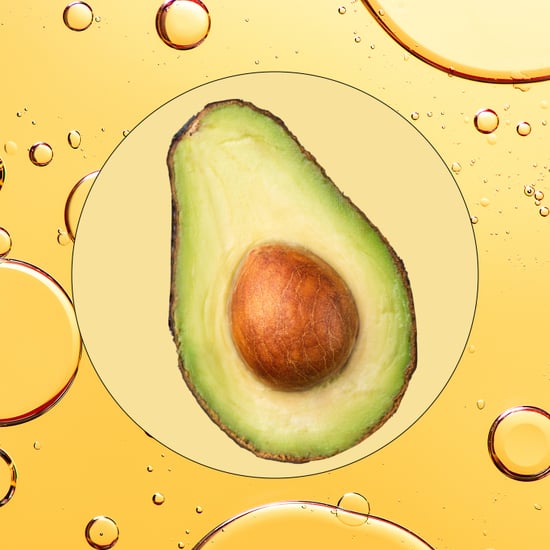"Tip Lift" Nose Job Procedure: Recovery, Before-and-Afters
A "Tip Lift" May Be the Next Big Thing in Plastic Surgery
 Image Source: Getty / Inarik and Photo Illustration: Michelle Alfonso
Image Source: Getty / Inarik and Photo Illustration: Michelle Alfonso
The world of cosmetic and plastic surgery is ever-evolving. Some things (not all, but some) that were cutting-edge five years ago may very well be outdated now — that's just how fast things move. A great example of this is the new and improved "tip lift" procedure. Nose jobs have been around for over a hundred years — bet you didn't know the first one on record was in 1887 — so it goes without saying that the methods and techniques have changed a lot. The tip lift is the next step in this great evolution of rhinoplasty.
This is no traditional rhinoplasty — it's a minimally invasive surgical procedure that slightly lifts the tip of the nose, making a minor but impactful change. Ahead, Barry Weintraub, MD, a renowned board-certified plastic surgeon in New York City, shares more about the specifics of a tip lift.
What Is a Tip-Lift Nose Job?
In a traditional rhinoplasty, there are two different types: open and closed rhinoplasty. But a tip lift is something different entirely. "[It's a] surgical procedure that, as it sounds, gently lifts the tip of the nose," Dr. Weintraub tells POPSUGAR. Unlike a standard nose job, it doesn't address other things like humps, nostril size, or just general nose shape — only the tip.
"By manipulating cartilage, using certain suture sequences, and fashioning a columellar strut or septal extension grafts, structural support is provided to give the tip an ever-so-gentle lift," he says.
Unlike some procedures that need to be touched up or redone later on in life, a tip lift is truly permanent because "the structures are permanently reconfigured and sewn into place during surgery."
Tip-Lift Benefits and Who's a Good Candidate
Whether you opt for a tip lift over a traditional nose job is a matter of desired results. If your only concern is the end of your nose, a less invasive lift might do the trick just fine.
"Because plunging, downturned tips are indicative of older individuals, a tip lift can take years off of one's face since it is more reflective of a youthful profile," says Dr. Weintraub. "The goal is a natural, understated side profile that alleviates a plunging, bulbous, clumsy, downturned tip."
Sometimes, surgically speaking, addressing the tip is all you need to restore harmony and balance to the face. However, in some cases, a tip lift can be combined with other procedures. "Often, I will perform a tip lift in conjunction with a face-lift, and its impact is significant."
Tip-Lift Nose Job Surgery Risks
The risks of this procedure, especially compared to a traditional nose job, are minor. "Because the nose has an excellent blood supply, bleeding and infection are rare," says. Dr. Weintraub. This is only helped by the fact that the area being worked on and the sutures needed to complete the surgery are both small.
"Excess bleeding is controlled in surgery by an injection of a compound that constricts blood vessels," he says. Additionally, sterilization during surgery is performed through intravenous antibiotics.
What to Expect During a Tip-Lift Nose Job Surgery
You'll need to get medical clearance from your doctor to get the tip-lift procedure. It's also recommended, as with many surgeries, to avoid blood-thinning compounds, such as aspirin, for two weeks beforehand.
"The surgery itself takes generally less than an hour with the patient under twilight anesthesia," says Dr. Weintraub. After, you'll be able to walk out under the supervision of a family member or friend to go home and rest. "[You'll] have sponges in each nostril and can sleep normally in bed, making sure to stay well hydrated," he says.
The sponges, which help provide internal support for the nose while it heals, can be removed by a doctor three days post-surgery.
Before and After a Tip-Lift Nose Job
Tip-Lift Nose Job Surgery Recovery
A short recovery time is a big benefit of the tip-lift procedure — this is because it only manipulates the cartilage of the nose. Dr. Weintraub says, "Very little bruising, if any, takes place, and swelling is minimal." For 10 days post-op, it's recommended you avoid heavy exercise or performing any activities that may raise your blood pressure.
To keep your skin protected, Dr. Weintraub says daily sunscreen application is a must. "In some instances, there isn't any external scar if the tip lift was done in a 'closed' fashion," he says. If a small incision were needed to access some of the structures in surgery, the closure of the wound would be done with microscopic loop magnification." This is where the surgeon, equipped with magnifying glasses, sews the incision closed with a suture that's finer than a piece of hair. This leaves behind a nearly invisible scar.






